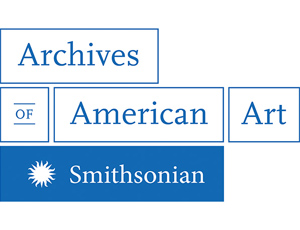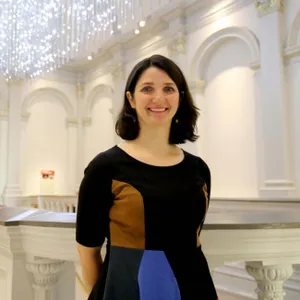Dog Days of December
:focal(2157x1542:2158x1543)/https://tf-cmsv2-smithsonianmag-media.s3.amazonaws.com/blogging/featured/AAA_ireldavi_29650.jpg)
In 1988, artist Laura Farabough exhibited Santa Dog, a site–specific video installation at the Hanson Gallery in Sausalito, California. That same year, Farabough featured “Santa Dog” on her holiday card to artist David Ireland. Laura Farabough christmas card to David Ireland, 1988. David Ireland papers, circa 1910s-circa 2009, Archives of American Art, Smithsonian Institution.
Nothing gets me in the holiday spirit quite like handmade cards. I even wrote a book about holiday cards found in the collections of the Archives of American Art. Oddly enough, I wrote the book during the dog days of summer, a time of year in Washington DC when it is made abundantly clear that the city was built on a swamp. In ancient times, “the dog days of summer” referred to the sweltering summer months when only dogs were mad enough to venture outdoors. Indeed, the constellation, Canis Major (Big Dog), shines brightest in July and August. Consequently, I frequently pulled down my shades, cranked up my air conditioning, and sipped hot cocoa in order to imagine myself in a winter wonderland as I wrote about handmade holiday cards. Dogs were never far from my mind, or the minds of many artists who made their own holiday greetings. In celebration of the “dog days of December” here are a few of my favorite canine cards.
Terrier Tidings
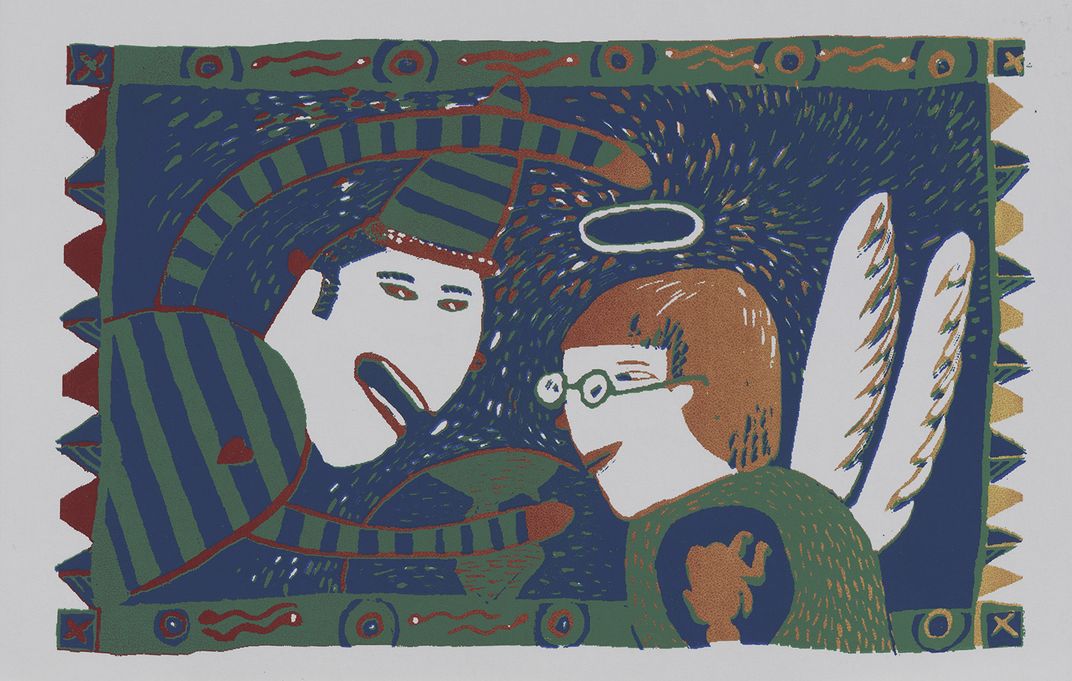
Ed Bisese Christmas card to Herbert Waide Hemphill, Jr., 1992. Herbert Waide Hemphill papers, 1776-1998, Archives of American Art, Smithsonian Institution.
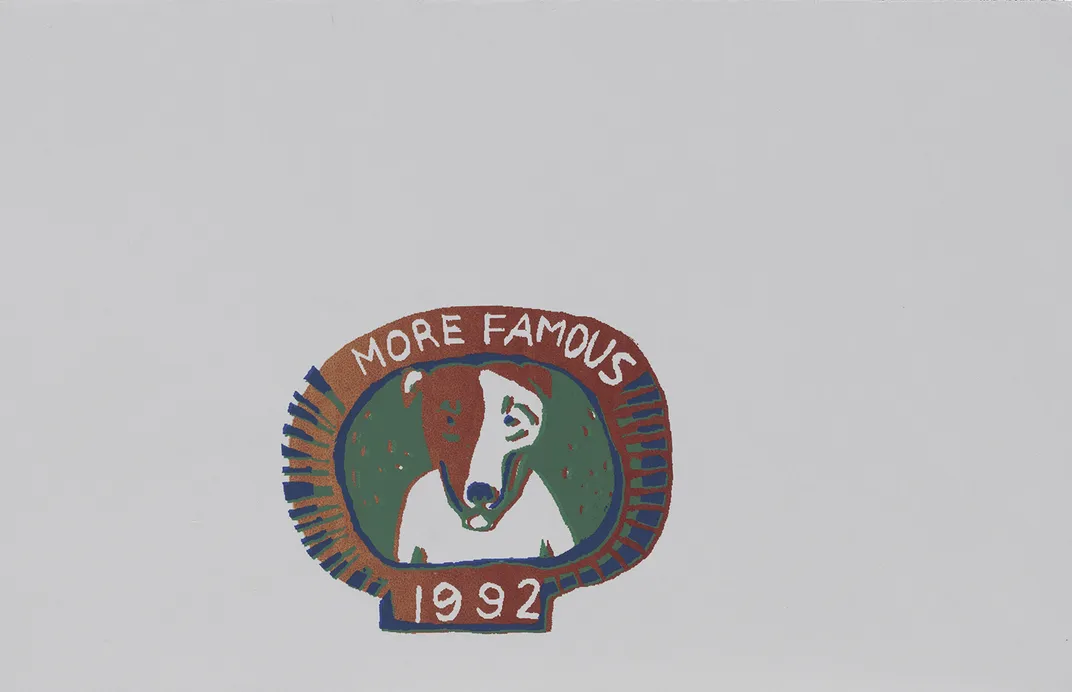
Verso, Ed Bisese Christmas card to Herbert Waide Hemphill, Jr., 1992. Herbert Waide Hemphill papers, 1776-1998, Archives of American Art, Smithsonian Institution.
Ed Bisese (b. 1956) has made silk-screened Christmas cards annually since 1988. Each year they feature a new and timely whimsical family vignette. The year 1992 was an eventful one in the Bisese household. Bisese, in a striped shirt and cone-shaped hat, and his pregnant wife, with angelic wings and a halo, smile inside a decorative border of sperm and eggs, heralding the arrival of their daughter the following year. The back of Ed Bisese’s holiday cards also chronicled the growing fame of his beloved Jack Russell terrier, Mr. Harris. In 1992, Mr. Harris, who occasionally was commercially photographed, starred on the cover of the Christmas issue of Baltimore magazine, and hence, he was more famous than the year before.
Chow Chows under the Mistletoe
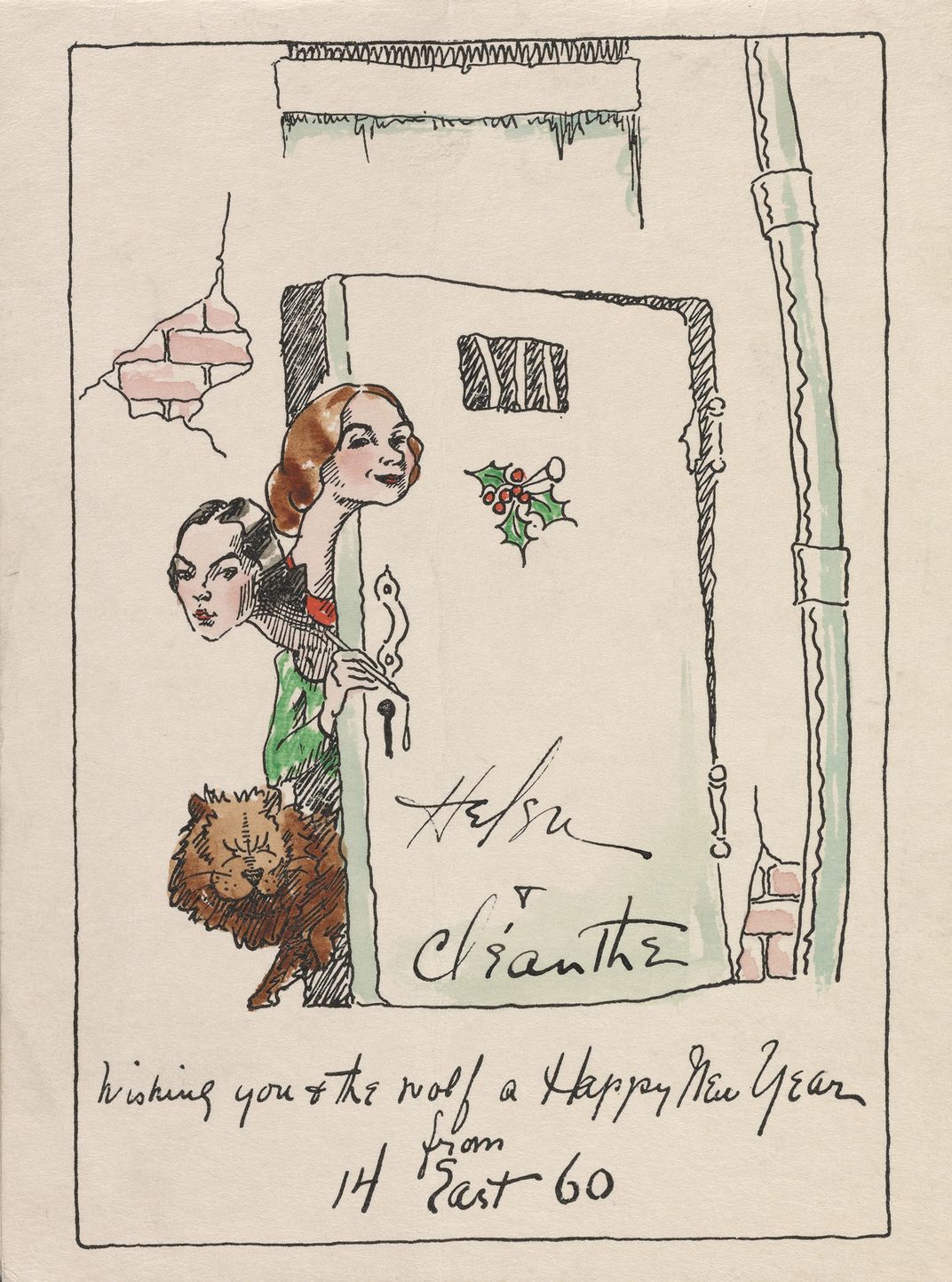
Helen and Cleanthe Carr Christmas card to Alfred Frueh, 194-?. Alfred J. Frueh papers, 1904-2010, Archives of American Art, Smithsonian Institution.
Peering out from behind the door of their New York City dwelling, Helen Carr, her stepdaughter Cléanthe, and one of their Chow dogs wish Guiliette Fancuilli and her husband, “the wolf,” Alfred Frueh a Happy New Year. The card’s creator, Cléanthe, inherited a love of drawing from her father, a longtime newspaper and magazine illustrator, Gene Carr. Another of her pursuits was Chow Chow Breeding. In 1927, Cléanthe made headlines for staging a wedding between her pedigree Chows, Kublah Khan and Li Helen. She married her two passions by frequently making detailed portraits of Chows.
Martha and the Menorah
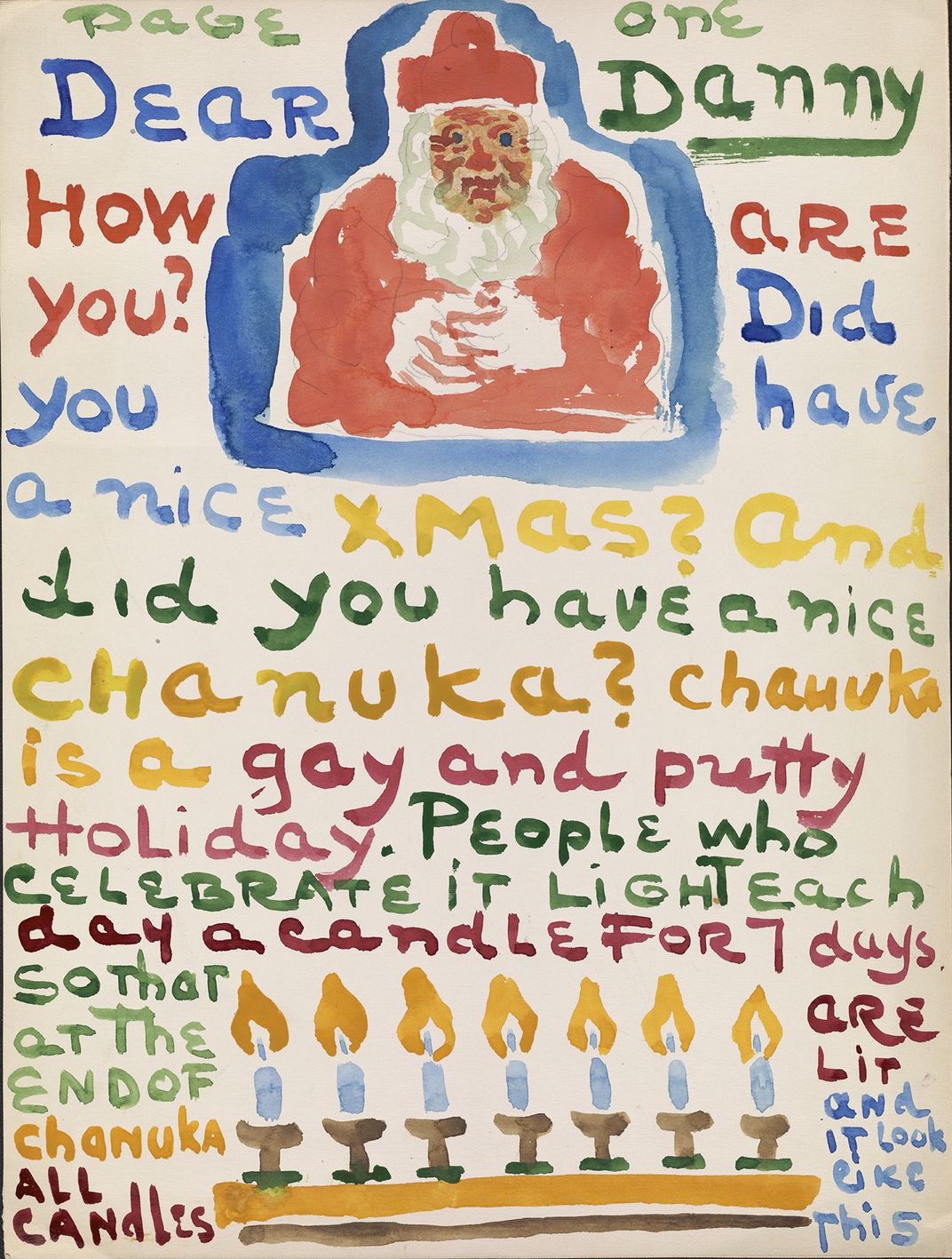
Moses Soyer letter to Daniel Soyer, 196-. Moses Soyer papers, circa 1905-1974, Archives of American Art, Smithsonian Institution.
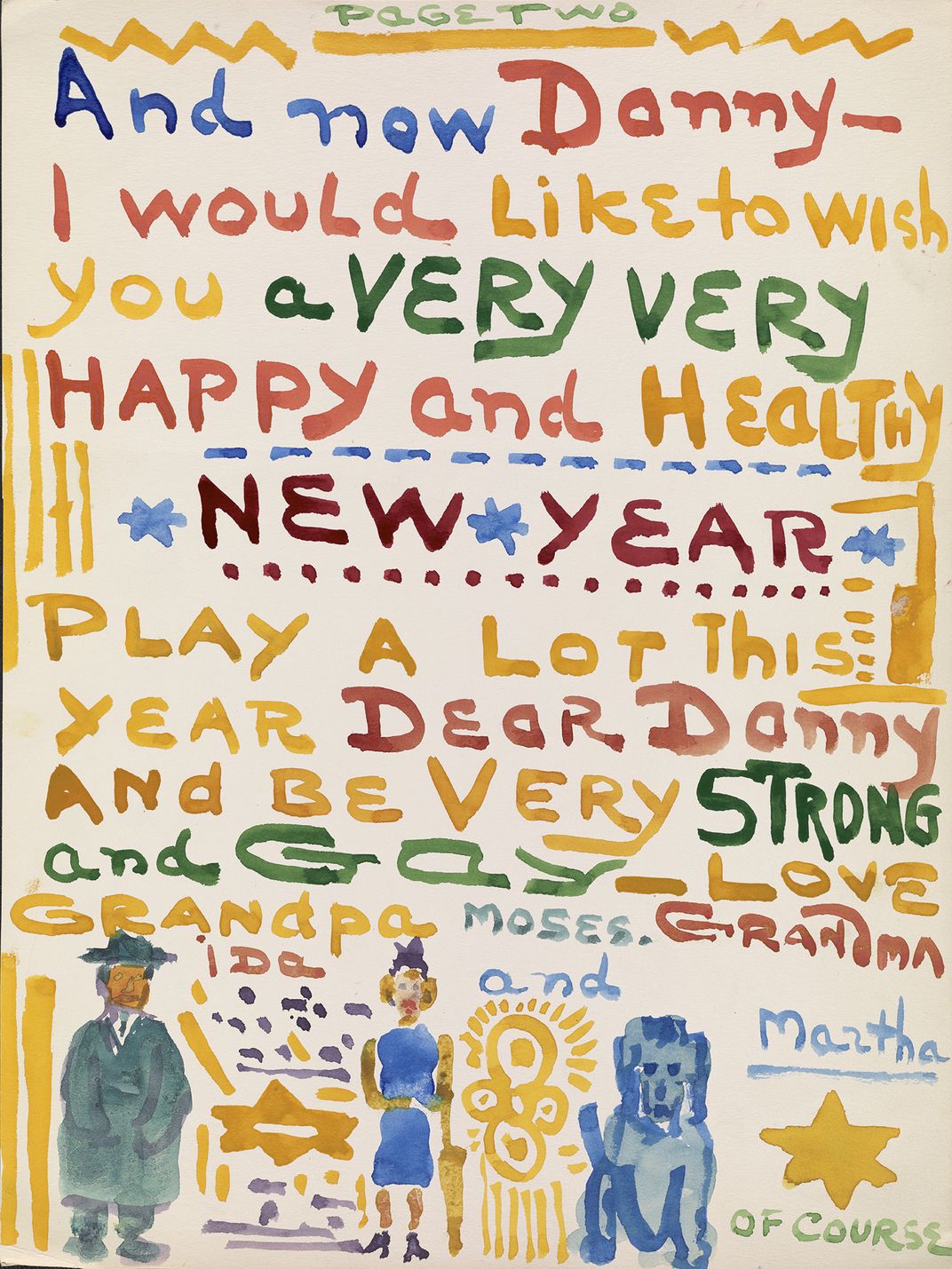
Page 2 of Moses Soyer letter to Daniel Soyer, 196-. Moses Soyer papers, circa 1905-1974, Archives of American Art, Smithsonian Institution.
In the early 1970s, painter Moses Soyer sent an illustrated letter to his grandson Daniel about Hanukkah. The little boy likely recognized the watercolor of Santa Claus, but Moses took time to explain the menorah: “People who celebrate [Hanukkah] light each day a candle for 7 days so that at the end of Chanuka all candles are lit and it looks like this” Soyer signed this charming letter with little portraits of himself and his wife, Ida, and “of course” their dog, Martha.
A Christmas Chien
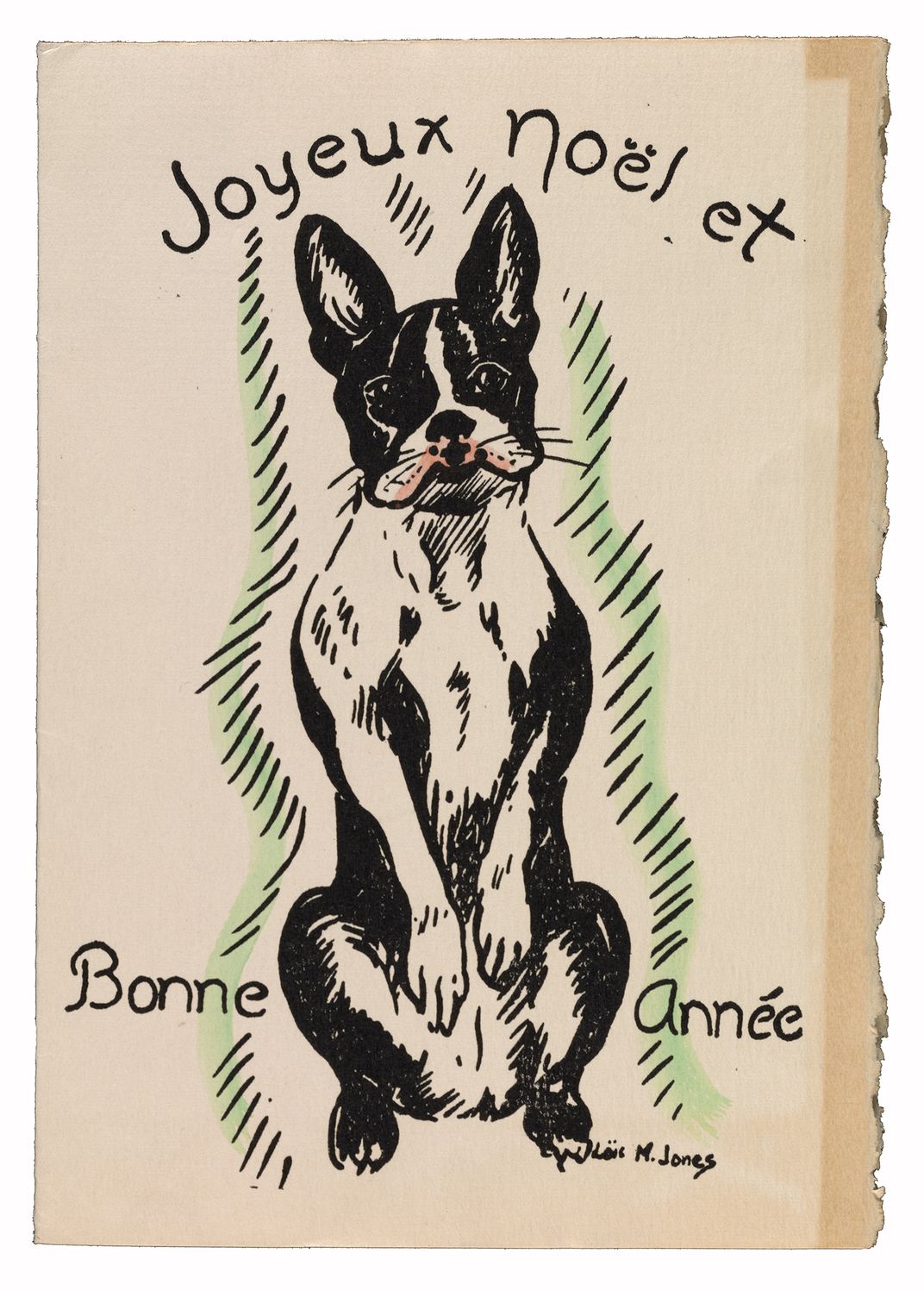
Lois M. Jones holiday card to Martin Birnbaum, ca. 1937. Martin Birnbaum papers, 1862-1967, Archives of American Art, Smithsonian Institution.
In 1937, Boston-born Loïs Mailou Jones took her first of many trips to Paris. As an African American woman, Jones relished her time in the more racially tolerant Paris, where she was judged more for the qualities of her art rather than her race or gender. Jones’s holiday greeting to an American colleague in Paris, art dealer Martin Birnbaum, unites her two worlds: her Boston roots—and her love of Boston terriers—and her second home in the City of Lights.
Happy Holidays to our two- and four-legged friends from the Archives of American Art!
The exhibition Season’s Greetings: Holiday Cards from the Archives of American Art was on view at the Lawrence A. Fleischman Gallery from November 20, 2009 – January 17, 2010. Mary Savig’s book Handmade Holiday Cards from 20th Century Artists was published in 2012.
A version of this post was originally published on the Archives of American Art Blog.
